Putin’s Undeclared War
Russian Artillery Strikes against Ukraine — A Bellingcat Report
Putin’s Undeclared War
Share this story
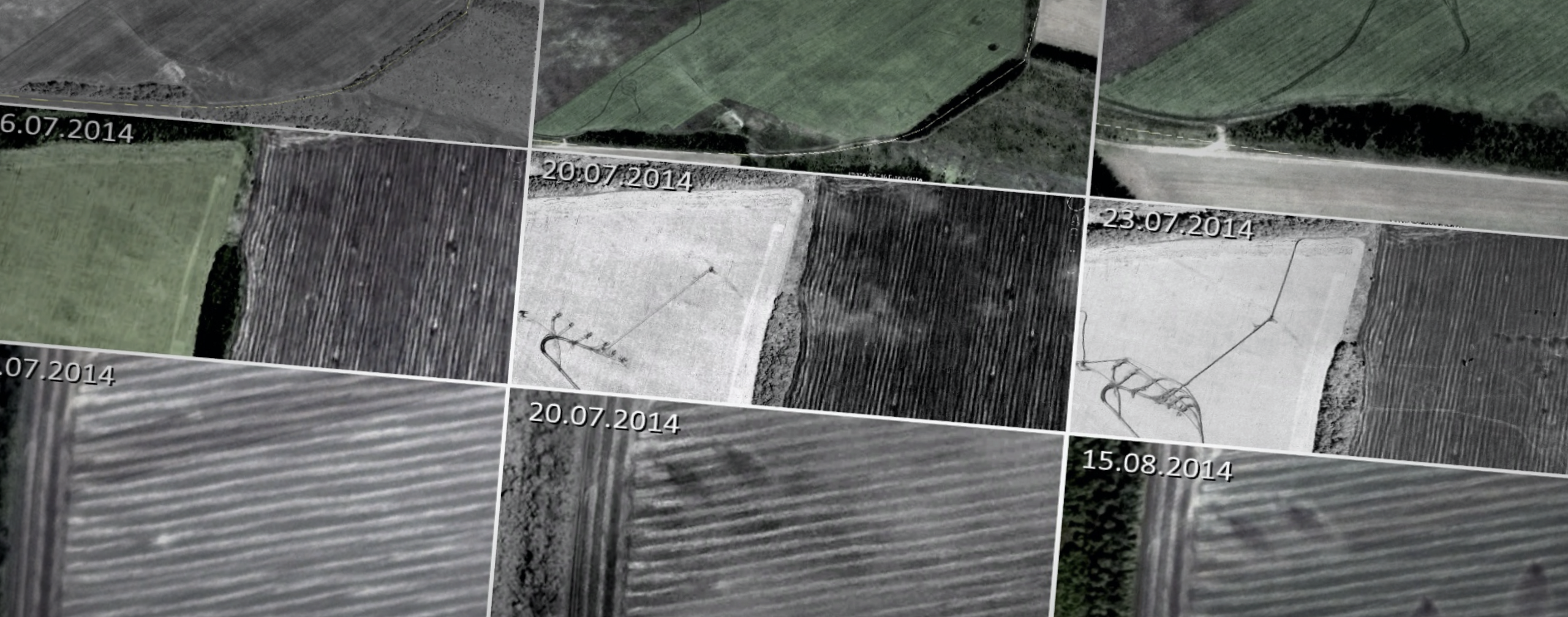
Overview
Since the beginning of the war in Eastern Ukraine in 2014, Putin and the Russian Ministry of Defense have continually denied the involvement of Russian troops, framing the conflict as internal. Overwhelming evidence, however, shows that there has been direct Russian involvement in the conflict, whether in the form of Russian weaponry stationed in Ukraine, or reports of Russian servicemen activity (see the DFRLab’s first full length report, Hiding in Plain Sight, which monitored Russian troop movements in Eastern Ukraine using open source methodologies).
Adding to this evidence is a new report, Putin’s Undeclared War, from open source investigative platform Bellingcat that dives into cross-border Russian artillery strikes against Ukraine in the summer of 2014. Bellingcat contributors Sean Case and Klement Anders compiled open source evidence of the strikes using publicly-available satellite imagery, social media evidence, and videos showing the launch of artillery rockets from multiple launch rocket systems (MLRS). Russian artillery strikes have been reported on in the past, but this is the first report to document the full scale of such attacks.
“…at least 149 verifiable artillery strikes [were] launched by Russian Armed Forces against Ukraine in the summer of 2014.”
Check out an introductory map tour that covers the report’s findings here.
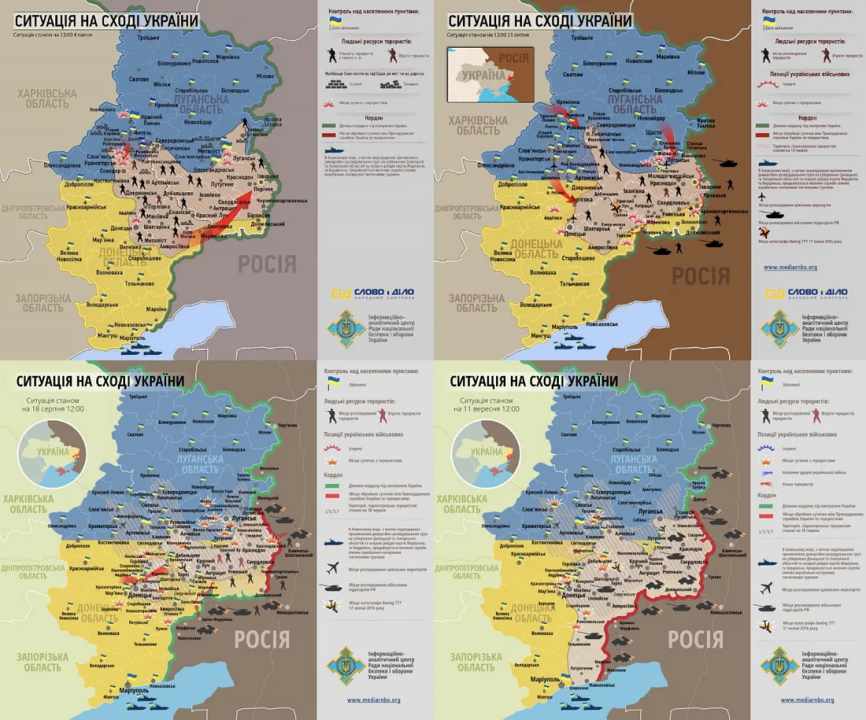
Using conservative criteria, the report identifies at least 149 verifiable artillery strikes launched by Russian Armed Forces against Ukraine in the summer of 2014 and describes 130 likely launch locations. Additionally, 408 sites of shelling in Ukraine were found to be within range of Russian artillery systems with a trajectory crossing the Ukrainian-Russian border. This evidence combined with the quantity of impact craters, lead the authors to conclude that thousands of projectiles were fired by the Russian military at Ukrainian targets during the summer of 2014
Methodology
By comparing Google Earth satellite imagery from different dates, the authors manually surveyed the area inside Ukraine within 22 km (approximate maximum range of a 122 mm DA18 howitzer) of the Ukrainian-Russian border in the Donets’k region, and the Luhans’k region border as far as Nyzhnya Vil’khova.
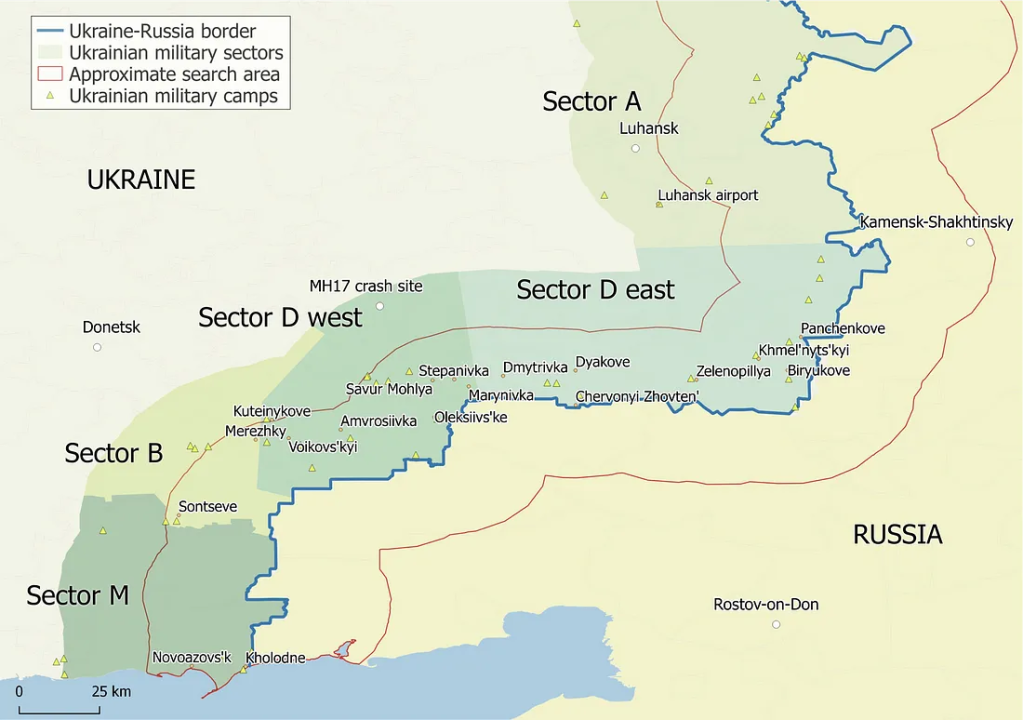
The firing locations were evaluated based on the blast marks left by artillery. Depending on the direction and date of appearance of the marks in the satellite images, they could be judged as evidence of a strike into Ukrainian territory. Additionally, depending on the type of equipment being used, the direction of vehicle marks, dug-in firing positions, or even the orientation of the barrel in cases where there were images of visible vehicles, were used to determine the ‘aiming trajectory’ of the strike.
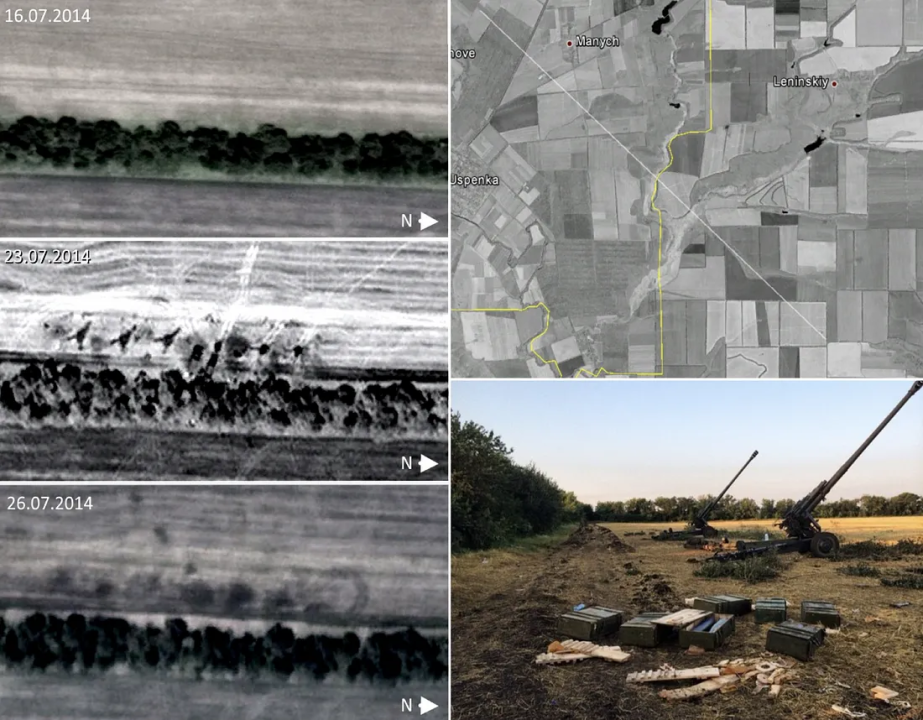
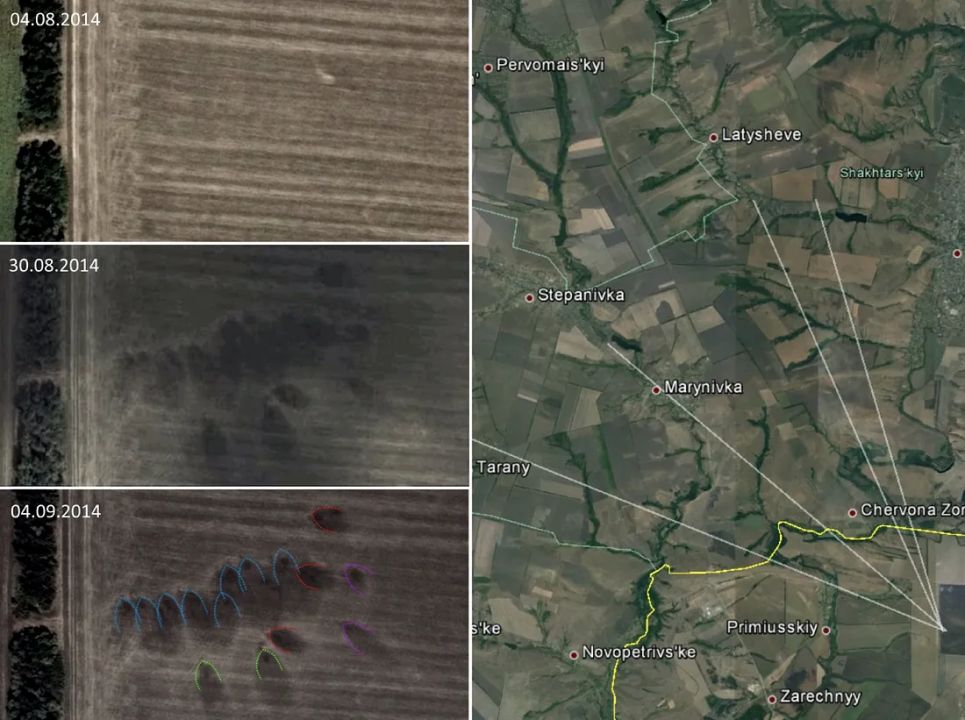
Thousands of potential firing sites were narrowed down to arrive at the final verifiable 149 strike locations in Russia. Many more sites were considered likely firing locations, but were not considered verifiable due to the strict nature of the criteria. The findings of all target sites and firing position are available in an online interactive map.
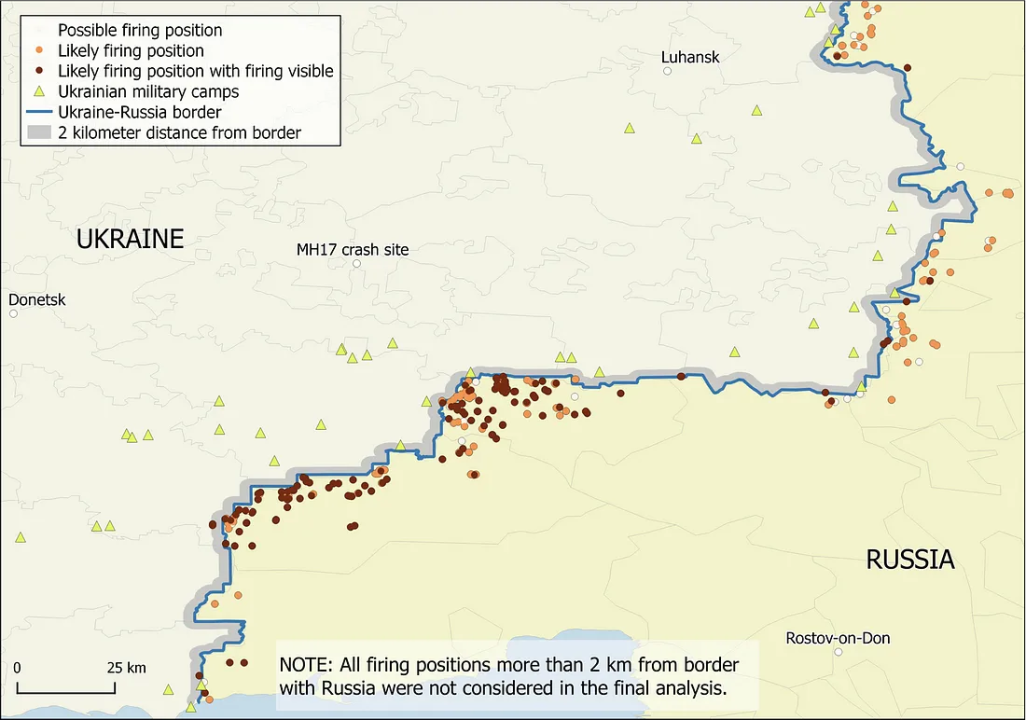
To evaluate attack sites the report looks at the evidence of artillery craters in attack sites within Ukraine with a trajectory indicating origin in Russia. For example, the below images show the appearance of up to 20 visible craters between July 23 and July 26 of 2014. The attacked area was mainly within Ukraine, but some craters were located within Russia. The perceived trajectory of the craters indicated a southwestern launch point, which would have come from Russian territory.
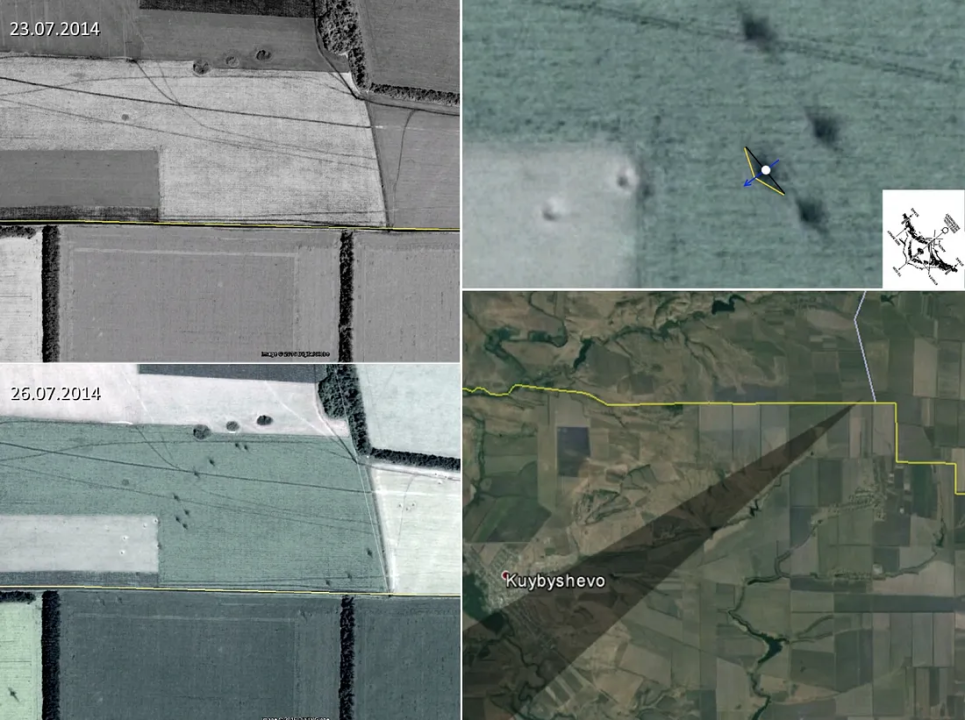
The authors also attempt to link the verified firing positions and attack sites using the estimated trajectories and the date that the supporting imagery surfaced.

Conclusion
Much greater discussion of methodology and findings can be found within the report, including a compilation of case studies detailing the investigated firing positions and attack sites. There is also a discussion of the proportionality of the verifiable findings to the overall reality of the shelling campaign. The findings suggest a much broader campaign with significantly higher numbers of strikes than were 100% verifiable.
The report concludes: “Due to the frequency, spatial distribution, and scale of the artillery attacks considered in this report, it is impossible to consider these attacks merely as accidents or as the actions of rogue units. These attacks can only therefore be considered as acts of war of the Russian Federation against Ukraine.”

